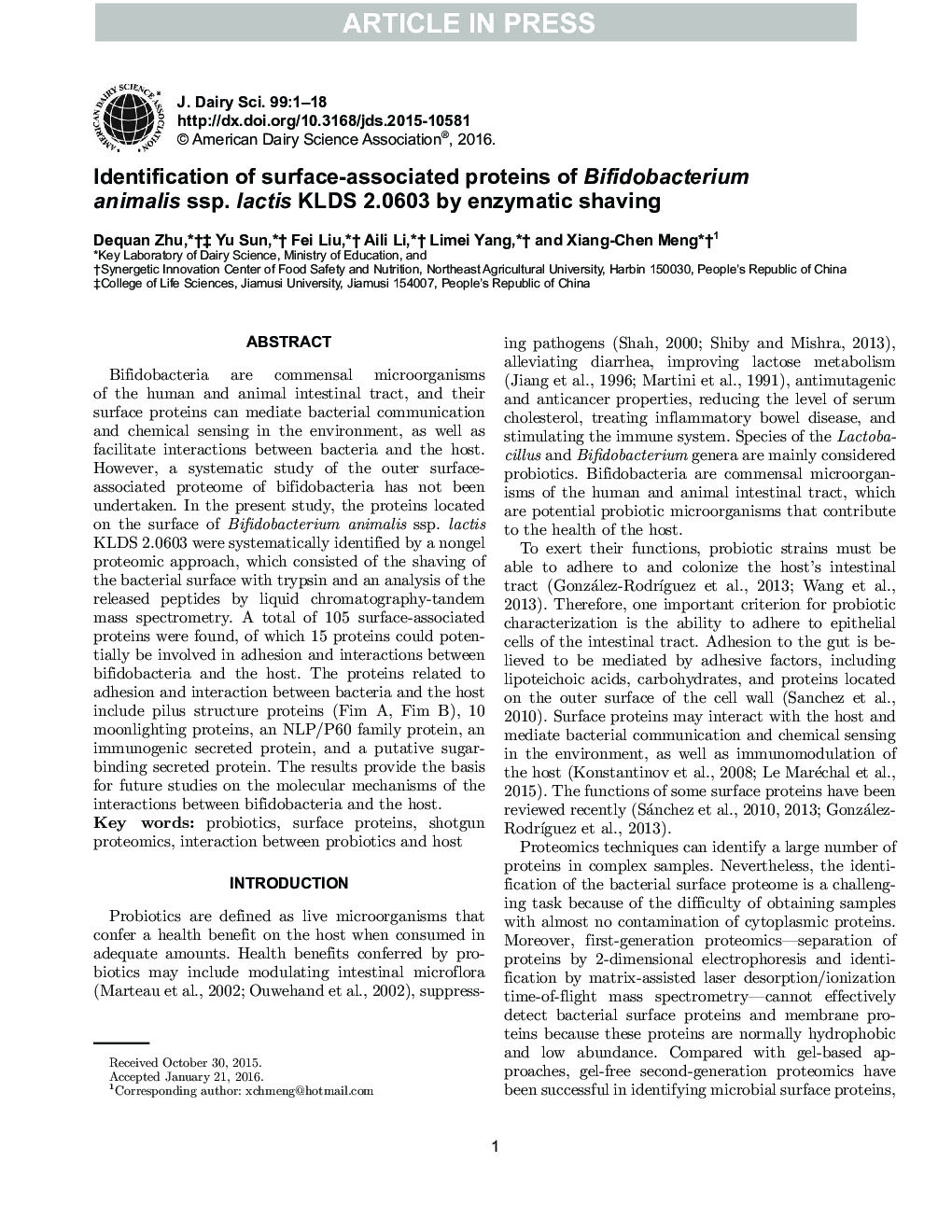| Article ID | Journal | Published Year | Pages | File Type |
|---|---|---|---|---|
| 10973615 | Journal of Dairy Science | 2016 | 18 Pages |
Abstract
Bifidobacteria are commensal microorganisms of the human and animal intestinal tract, and their surface proteins can mediate bacterial communication and chemical sensing in the environment, as well as facilitate interactions between bacteria and the host. However, a systematic study of the outer surface-associated proteome of bifidobacteria has not been undertaken. In the present study, the proteins located on the surface of Bifidobacterium animalis ssp. lactis KLDS 2.0603 were systematically identified by a nongel proteomic approach, which consisted of the shaving of the bacterial surface with trypsin and an analysis of the released peptides by liquid chromatography-tandem mass spectrometry. A total of 105 surface-associated proteins were found, of which 15 proteins could potentially be involved in adhesion and interactions between bifidobacteria and the host. The proteins related to adhesion and interaction between bacteria and the host include pilus structure proteins (Fim A, Fim B), 10 moonlighting proteins, an NLP/P60 family protein, an immunogenic secreted protein, and a putative sugar-binding secreted protein. The results provide the basis for future studies on the molecular mechanisms of the interactions between bifidobacteria and the host.
Related Topics
Life Sciences
Agricultural and Biological Sciences
Animal Science and Zoology
Authors
Dequan Zhu, Yu Sun, Fei Liu, Aili Li, Limei Yang, Xiang-Chen Meng,
